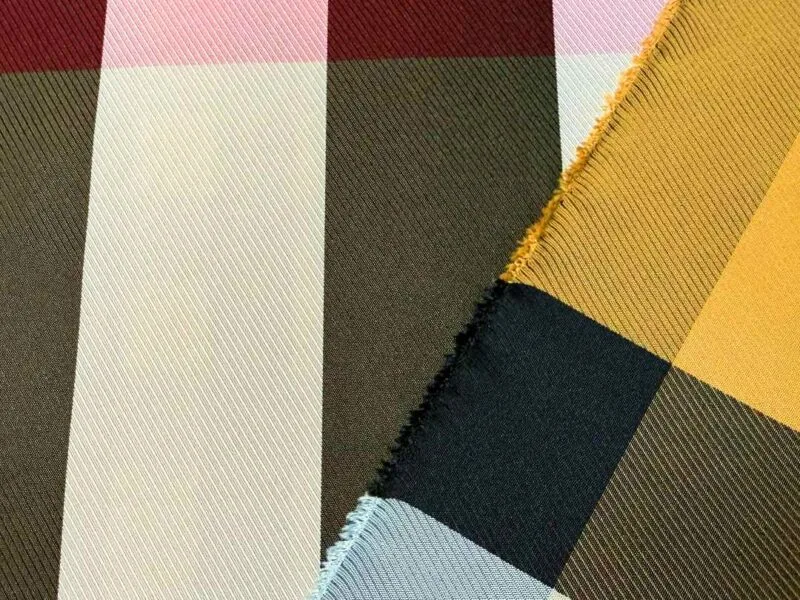
Polyester is one of the most widely used synthetic fabrics in the textile industry, renowned for its versatility, durability, and affordability. Over the years, it has become a cornerstone material in clothing, home textiles, industrial applications, and beyond. This article explores the advantages and features of polyester fabrics, detailing why they remain a popular choice for both manufacturers and consumers.
1. What is Polyester Fabric?
Polyester fabric is made from polyethylene terephthalate (PET), a type of polymer derived from petroleum. The manufacturing process involves melting PET chips and spinning them into fibers, which can be woven or knitted into fabrics. Polyester is often blended with other fibers like cotton or spandex to enhance its properties further.
2. Key Features of Polyester Fabrics
2.1 Durability and Strength
Polyester is known for its exceptional strength and durability. It can withstand significant wear and tear, making it suitable for both everyday use and heavy-duty applications.
- Abrasion Resistance: The fibers are resistant to damage from friction, making them ideal for activewear and upholstery.
- Tear Resistance: Polyester fabric is less prone to tearing, even under stress.
2.2 Wrinkle Resistance
One of polyester’s standout features is its ability to resist wrinkles. Unlike natural fibers like cotton, polyester retains its shape and smooth appearance without the need for frequent ironing.
2.3 Moisture-Wicking Properties
Polyester is hydrophobic, meaning it repels water rather than absorbing it. This characteristic makes it a favorite for sportswear and outdoor clothing.
- Quick-Drying: Moisture evaporates quickly from polyester fabrics, keeping the wearer dry and comfortable.
- Breathability: Advanced weaving techniques enhance the breathability of polyester, improving comfort during physical activities.
2.4 Lightweight and Comfortable
Polyester fabrics are lightweight and soft, making them comfortable to wear. They can be engineered to mimic the feel of natural fibers like silk or wool, offering versatility in design and application.
2.5 Color Retention
Polyester has excellent dye retention properties. Colors remain vibrant and do not fade easily, even after multiple washes or prolonged exposure to sunlight.
3. Advantages of Polyester Fabrics
3.1 Affordability
Polyester is cost-effective to produce, making it an economical choice for manufacturers and consumers. Its affordability does not compromise its quality, making it accessible for a wide range of applications.
3.2 Versatility
Polyester fabrics are highly versatile, lending themselves to a broad spectrum of uses:
- Fashion: Dresses, suits, and casual wear.
- Sportswear: Activewear, jerseys, and swimwear.
- Home Textiles: Curtains, bed linens, and cushions.
- Industrial Applications: Conveyor belts, safety gear, and filters.
3.3 Easy Maintenance
Polyester fabrics are low-maintenance and easy to care for:
- Machine Washable: Most polyester items can be machine washed without special treatment.
- Stain Resistance: The fabric resists stains, and any marks can be easily removed.
- Shrink Resistance: Unlike natural fibers, polyester does not shrink after washing.
3.4 Blending Potential
Polyester is often blended with other fibers to combine their advantages. For instance:
- Poly-Cotton: Combines polyester’s durability with cotton’s softness.
- Poly-Wool: Offers warmth with added strength and wrinkle resistance.
- Poly-Spandex: Provides stretch and flexibility for activewear.
3.5 Sustainability Options
With advancements in recycling technologies, polyester can now be made from recycled PET bottles, reducing its environmental footprint. Recycled polyester retains the same quality and performance as virgin polyester.
4. Applications of Polyester Fabrics
4.1 Clothing
Polyester is a staple in the fashion industry. Its ability to mimic natural fibers, combined with its durability and easy care, makes it ideal for a wide range of garments.
4.2 Home Textiles
In home furnishings, polyester fabrics are used for curtains, upholstery, and bedding due to their wrinkle-free and colorfast properties.
4.3 Outdoor Gear
Polyester’s moisture-wicking and quick-drying properties make it indispensable for outdoor gear like tents, sleeping bags, and backpacks.
4.4 Industrial Use
In industries, polyester fabrics are employed in products like conveyor belts, ropes, and safety harnesses due to their high strength and durability.
5. Environmental Impact
While polyester’s production involves the use of non-renewable resources like petroleum, strides are being made toward more sustainable practices. Recycled polyester (rPET) is an eco-friendly alternative that utilizes post-consumer waste, such as plastic bottles, to create new fabrics. Additionally, ongoing research aims to develop biodegradable polyesters to address concerns about plastic pollution.
6. Challenges and Considerations
6.1 Environmental Concerns
Traditional polyester is not biodegradable, contributing to long-term environmental challenges. Efforts to recycle polyester are growing, but the industry still has room for improvement.
6.2 Heat Sensitivity
Polyester is sensitive to high temperatures and may melt or deform if exposed to extreme heat. Proper care is essential to avoid damage.
6.3 Static Electricity
The synthetic nature of polyester can lead to static buildup, especially in dry conditions. Blending polyester with natural fibers can mitigate this issue.
7. Conclusion
Polyester fabrics offer a perfect combination of durability, affordability, and versatility, making them a go-to choice for various applications. Their wrinkle resistance, moisture-wicking properties, and vibrant color retention cater to the needs of modern consumers and industries alike. With advancements in sustainable production, polyester is poised to remain a key player in the textile world while addressing environmental challenges. By understanding the features and advantages of polyester fabrics, manufacturers and consumers can continue to leverage their benefits while working toward a more sustainable future.

